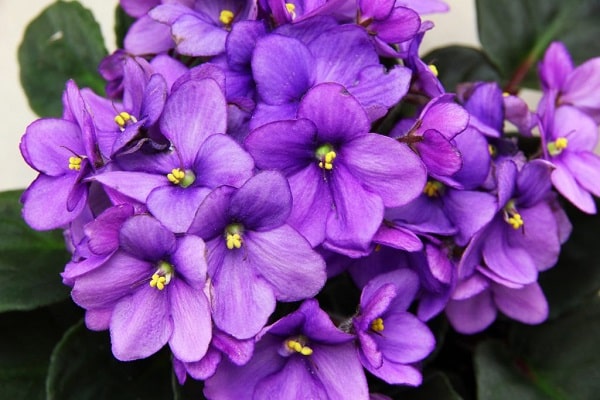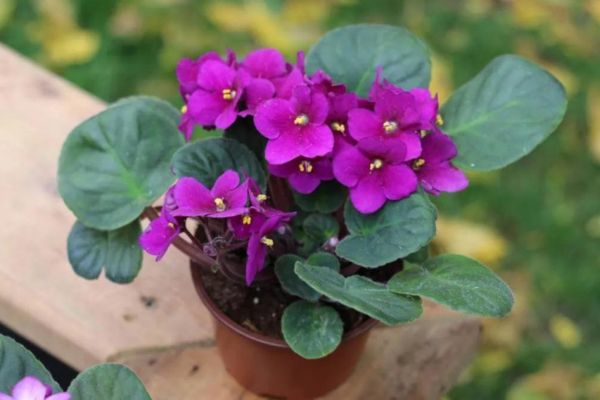African violets (Saintpaulia spp.) have gained popularity as beautiful and vibrant houseplants due to their stunning flowers and relatively easy care requirements. If you’re an African violet enthusiast looking to expand your collection, propagation is an essential skill to master. Propagation allows you to create new plants from existing ones, providing an abundant supply of these charming flowers. This article will explore the benefits of propagating African violets in sphagnum moss and provide a comprehensive step-by-step guide to help you successfully propagate these plants.
Quick Navigation
Benefits of Propagating African Violets

Benefits of Propagating African Violets in Sphagnum Moss When it comes to propagating African violets, sphagnum moss is an excellent medium. Here are the key benefits of using sphagnum moss for propagation:
Root Development
Sphagnum moss has excellent water retention properties, ensuring that the developing roots receive consistent moisture without becoming waterlogged. This promotes optimal root growth and helps prevent issues such as root rot.
Root Growth
Sphagnum moss creates a stable and consistent environment for the delicate roots of African violets. It offers cushioning and protection during the early stages of growth, reducing transplant shock when the rooted cuttings are eventually transferred to their permanent pots.
Easy Monitoring
Sphagnum moss allows you to monitor the propagated African violets’ root development visually. You can easily assess the health and progress of the roots and make necessary adjustments to the moisture levels accordingly.
Risk Of Overwatering
Overwatering is a common problem when propagating plants. Sphagnum moss helps mitigate this risk by holding moisture while excess water drains away, preventing soggy conditions leading to root rot.
Strong Plants
Propagating African violets in sphagnum moss provides the ideal conditions for root growth, resulting in healthy and vigorous plants. The increased success rate encourages further propagation, allowing you to expand your African violet collection rapidly.
- Materials and Equipment Needed Before diving into the propagation process, gather the following materials and equipment:
- African violet plants: Select healthy and robust African violet plants as parent plants for propagation. Choose plants with desirable traits and vibrant blooms.
- Sphagnum moss: Acquire fresh and high-quality sphagnum moss, ensuring it is clean and free from contaminants.
- Containers: Prepare clean and sterilized containers for holding the sphagnum moss and stem cuttings. Ensure the containers have proper drainage to prevent waterlogging.
- Optional tools or additives: Consider using a rooting hormone to promote root development. Sterile pruning shears can be used for taking stem cuttings.
- Clean water source: Ensure a reliable source of clean water for moistening the sphagnum moss and watering the propagated African violets.
Step-by-Step Guide to Propagating African Violets in Sphagnum Moss

Selecting the ideal parent plant for propagation:
- Choose a healthy parent plant with no signs of disease or stress.
- Select a plant with desirable traits, such as vibrant flower color or compact growth habit.
Preparing the sphagnum moss for use:
- Moisten the sphagnum moss thoroughly by soaking it in water and squeezing excess moisture. It should be moist but not dripping.
Choosing And Preparing The Appropriate Containers
Choose containers that are suitable for holding the sphagnum moss and stem cuttings. Use clean and sterilized containers to prevent the transmission of diseases.
- Select containers with proper drainage holes to allow excess water to escape and prevent waterlogging.
- Clean the containers thoroughly to remove any debris or contaminants.
- Sterilize the containers by soaking them in a understaning of 1 part bleach to 9 parts water for about 10 minutes. Rinse them well with clean water before use.
Taking And Preparing Stem Cuttings From The Parent Plant
- Select healthy and non-flowering stems from the parent plant using sterile pruning shears.
- Just below a leaf node, cut the ends of the stems at forty-five degrees.
- Remove any flowers or buds from the stem, as they can divert energy from root development.
Inserting The Stem Cuttings Into The Moistened Sphagnum Moss
- Create holes in the moistened sphagnum moss using a pencil or your finger.
- Insert the stem cuttings into the holes, ensuring that at least two leaf nodes are buried in the moss.
- Gently press the moss around the stem cuttings to secure them in place.
Proper Care And Maintenance Of The Propagated African Violets
Provide The Right Number And Quality Of Light
- Place the containers with the stem cuttings in a location with bright, indirect light.
- just ignore exposing them to direct sunlight, as it can scorch the leaves.
- Supplemental fluorescent lights can provide adequate light if natural light is insufficient.
Maintain Optimal Temperature And Humidity Levels
- African violets prefer temperatures between 65°F to 75°F (18°C to 24°C).
- Maintain humidity levels around 50% to 60% to prevent the cuttings from drying.
- Using a humidity dome or covering the containers with clear plastic can help create a humid microclimate.
Watering And Fertilizing Guidelines
- Water the sphagnum moss when the top layer feels slightly dry.
- Avoid overwatering, as excessive moisture can lead to rotting.
- Use a balanced African violet fertilizer diluted to half the recommended strength every two to four weeks to provide essential nutrients.
Monitoring The Rooting Progress And Signs Of Successful Propagation
- Regularly check the moisture levels of the sphagnum moss and adjust as needed.
- Look for signs of root development, such as small white or pale roots emerging from the stem cuttings.
- New growth, including leaves and shoots, is a positive indication of successful propagation.
Transplanting The Rooted Cuttings Into Individual Pots Or The Desired Growing Medium
- Once the root system has developed sufficiently, carefully transplant each rooted cutting into its pot or the desired growing medium.
- Use a well-draining potting mix formulated specifically for African violets.
- Carefully separate the cuttings from the sphagnum moss, avoiding the roots.
- Plant the rooted cuttings in their new containers, ensuring the roots are covered but the plant’s crown remains above the soil line.
Troubleshooting and Tips for Success
Common Challenges Encountered During The Propagation Process
- Overwatering, which can lead to root rot.
- Insufficient or excessive light affects the growth and health of the propagated plants.
- Mold or fungus growth due to excessive moisture or poor ventilation.
Tips For Avoiding Common Issues And Ensuring Successful Propagation
- Monitor the moisture levels of the sphagnum moss and adjust as needed, ensuring it remains moist but not soggy.
- Provide adequate but indirect light for the propagated African violets to promote healthy growth.
- Maintain proper ventilation to prevent the growth of mold or fungus. Remove any decaying plant material promptly.
- Avoid overcrowding the containers, leading to poor air circulation and increased disease risk.
Techniques To Optimize Root Development And Promote Healthy Plant Growth
- Consider using a rooting hormone when taking stem cuttings to stimulate root growth.
- Maintain consistent moisture levels in the sphagnum moss to provide an ideal environment for root development.
- Ensure the containers have proper drainage to prevent water accumulation around the roots.
- Provide a balanced fertilizer specifically formulated for African violets to supply essential nutrients for healthy growth.
FAQs
Can You Grow African Violets In Sphagnum Moss?
Yes, African violets can be successfully grown in sphagnum moss. Sphagnum moss provides excellent moisture retention, creating a favorable environment for root development. It helps prevent overwatering and promotes healthy growth in African violets.
What Is The Fastest Way To Propagate African Violets?
The fastest way to propagate African violets is by taking leaf cuttings. This method involves removing healthy leaves from the parent plant and placing them in a suitable growing medium. The leaf cuttings will develop new plantlets at the base of the leaf, which can then be potted individually once they have established roots.
What Moss To Use For African Violets?
For African violets, it is recommended to use sphagnum moss rather than other types of moss. Sphagnum moss provides the right balance of moisture retention and aeration, which is beneficial for the roots of African violets. It helps create an ideal environment for propagation and root development.
Conclusion
Propagating African violets in sphagnum moss is a rewarding and effective method to expand your collection of these captivating houseplants. The benefits of using sphagnum moss, such as effective moisture retention and stable root growth, make it an ideal medium for propagation. By following the step-by-step guide in this article and implementing the tips for success, you can confidently propagate African violets and enjoy the satisfaction of nurturing healthy and vigorous plants.

My name is Md Deloar Hossain and I’m the creator of Club Gardening, designed for all your gardening ideas, gardening product reviews, and a place to help you find the best gardening experience possible.


